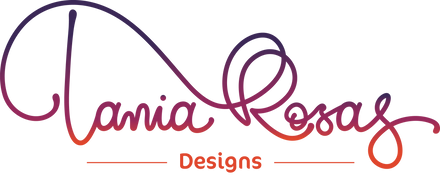Learn about cork leather
We have always been curious about working with cork leather and compare it to animal leather. We were lucky to receive a custom order for a cork leather backpack which resulted in our the colourful "Denise" backpack made of our "Rainbow confetti" cork leather.
This gave us the opportunity to research cork leather. In this article, we share with you what we have learned about cork leather, what it is, how it is produced and how it compares to animal leather. Let's dive right in.
What is cork?
Cork is derived from the bark of cork oak trees also know as "Quercus Suber". These trees mostly grow in Southeast European and North African countries.
As the cork oak tree grows, it also develops its bark which is essentially the dead cells that build up on the outer surface of the tree. This process typically takes 25-30 years before the first cork is ready to be harvest.
Harvesting is usually performed by the skillful hands of an expert to make sure the rest of the trees are not damaged. This process is beneficial to the trees as it enhances their carbon dioxide absorption. The harvesting process can then be performed on intervals of 9 years. A tree can on average yield a total of 12 harvests in its lifespan.
When does cork become cork leather?
Cork leather creation may vary between manufacturers and suppliers, so we recommend to verify with them directly if you are unsure of the materials and processes they have used for the creation.
Here are some of the key steps that we have found for cork leather manufacturing:
- The harvested bark is left to air dry for around 6 months
- To add more flexibility and avoid cracking the air-dried bark gets boiled
- This is followed by compressing the bark into a large block. This block will get sliced into the right thickness and length required
- Depending on the end cork leather design there maybe be additional colours or effects which will take place at this stage. For example the "Rainbow confetti" cork leather we use contains glittery details.
- At this point the cork part is ready to be glued to a fabric. This is what makes it sewable. The glue used is the resin of the tree which is a natural and strong adhesive. Depending on the manufacturer, the fabrics used can vary from natural to synthetic fibers.
What is the difference between cork fabric and cork leather?
In short, there is no difference between cork leather and cork fabric. Cork fabric and cork leather are different terms for the same product, namely a fabric made out of a cork layer adhered to a fabric.
The term leather strictly by definition is the skin of an animal. So by terminology alone, the correct term should be "cork fabric" instead of "cork leather".
The term cork leather has been widely adopted, probably so that cork fabric/leather becomes an appealing vegan alternative to animal leather.
Questions & Answers around cork leather
Before working with cork leather, we had a few doubts and in case you have them too, we have compiled a list of questions and answers for you!
Does cork leather crack or is it brittle?
No, during the manufacturing process the cork is treated in such a way that further elasticity is given, hence making it very usable for sewing and leather good creation.
Is cork leather waterproof?
Naturally, cork is very water-resistant but it is not completely waterproof. With our cork leather products, you can safely walk in the Irish rain, for example, and keep your items protected so long you don't stand in heavy rain for hours. It is comparable to a thick fabric like waxed canvas, that when exposed to heavy water also will not be 100% waterproof.
Can I wash my cork leather products?
No, you should not wash or tumble dry our cork leather products. Whether it is the excessive water or the constant spinning around, during the washing the cork leather gets destroyed. The cork layer becomes detached from the underlying fabric and loses it shape. Below is an image where you can compare the original state (on the right) and the state after the wash (left).

Our wash test was performed at 30 degrees with a standard wash cycle. If you need to clean a cork leather product we recommend a damp cloth.
Can I iron my cork leather products?
No, it is not recommended to iron cork leather products. The heat of the iron can affect the natural resin that glues the cork leather layer with the fabric it is attached to. Additionally, depending on the heat, you could modify the colour and texture of the cork leather with your iron.
Is cork leather vegan?
Yes, cork leather is a vegan material since the raw material and the glue are derived from a plant-based source, namely cork oak trees.
Is cork leather sustainable and eco-friendly?
This one is a "it depends". The answer to this question depends heavily on what methods and materials have been used to manufacture cork leather. As highlighted above, the methods and materials can vary depending on the manufacturers or suppliers. Therefore, we cannot give a blank statement that applies across the board. However, we can help you understand what to look for.
- Sustainable:
- For a material to be sustainable, it is good to look more at the methods how it is acquired and produced. Since cork leather comes from trees, a sustainable harvesting method would be by ensuring that there are sufficient new trees grown and the existing ones are not damaged in the process. In other words, you regenerate as much as you remove.
- Eco-friendly:
- In simple words, a material is eco friendly when it does not harm the environment. For example if a material is compostable leaving no chemical residue it can be considered eco-friendly. Cork and the resin (used as glue) being natural organic materials, they will decompose without any harm to the environment.
- Since we know that to make cork leather an additional fabric layer is needed, also this needs to be eco-friendly for the overall cork leather to be good for the environment. There is a large number of cork leather still produced with polyester which is essentially plastic and less good for the environment.
While we are delighted to offer cork leather products, we were disappointed to find out that the "Rainbow confetti" cork leather we use, is made with polyester fabric. And even though cork leather grows on trees, the number of cork leather suppliers don't! Despite the limited offering, we will continue to research for better and more eco-friendly alternatives, ideally cork leather made with organic canvas or organic cotton to minimise harm to our beloved planet.
Comparison to animal leather
- It is vegan: While most animal leather is a by-product from the food and wool industry, nonetheless the product derives from animal skin. Cork leather is plant-based and therefore vegan.
- Harvesting benefits the trees: When done properly, the harvesting process is beneficial to the trees as it enhances their carbon dioxide absorption.
- Manufacturing process is less chemical: The tanning process for animal leather uses chemicals that are not eco-friendly. In the manufacturing of vegetable tanned animal leather there is less but yet still chemical being used. Cork leather can be eco-friendly but this will highly depend on the fabric that is used to manufacture it. For example, if polyester is used to back the cork, then the fabric would not be eco-friendly as polyester can not always be recycled and does decompose for around 500 years.
- Lightweight: It is extremely lightweight making this a key benefit. Though, animal leather does not have to be thick, there are thinner types usually used in clothing which are very lightweight as well.
- Sew-ability and flexibility: The material is very easy to work with because of its flexibility and thin material. It is partially fabric, so if you are familiar with sewing fabrics, you can pick up cork leather and use your know techniques.
- Variety: From a design point of view, there are a tons of designs and colours available. This is not necessarily an advantage over animal leather but it is an advantage in general for cork leather. You will not get bored of the many designs there are.
Disadvantages:
- Sturdiness and durability: During the wash test, we noticed how easily the cork layer comes apart from the fabric. The cork layer is very thin and itself can be torn by hand similar to paper. What keeps it together and gives it its shape is really the fabric it is attached to. Animal leather is very hard to rip apart, even the thinnest leather will at least require scissors to cut apart.
- Often paired with polyester: Often cork leather is manufactured with polyester making the material less eco-friendly.
- Burnishing the raw edges: During this process heat is generated via friction to the raw edges of leather. After being treated the edge will have a slick and smooth finish.
- Moulded products: Wet leather can adopt the shape of a mould when it dries. This is often seen on handbags or masks made of leather. Cork as a raw material can be moulded, however, once it is cork fabric, this technique is not possible.
- Tooling: This is the art where leather is engraved or embossed with beautiful designs. Hot embossing is possible with cork leather though it might not be very visible due to the nature of the fabric design and because the thickness of the cork layer is relatively thin leaving very little room for the relief.
Our verdict
Cork leather is a beautiful, lightweight and vegan fabric. It is a great fabric addition to animal leather and standard fabrics to make bags. We hope that in future and with more demand, we start seeing this fabric being more accessible and completely eco-friendly.
We hope this was informational and useful to you. The more we all become eco-conscious and curious, the more we can all do to reduce the harm to our planet. This starts by the daily choices we can all make today.



